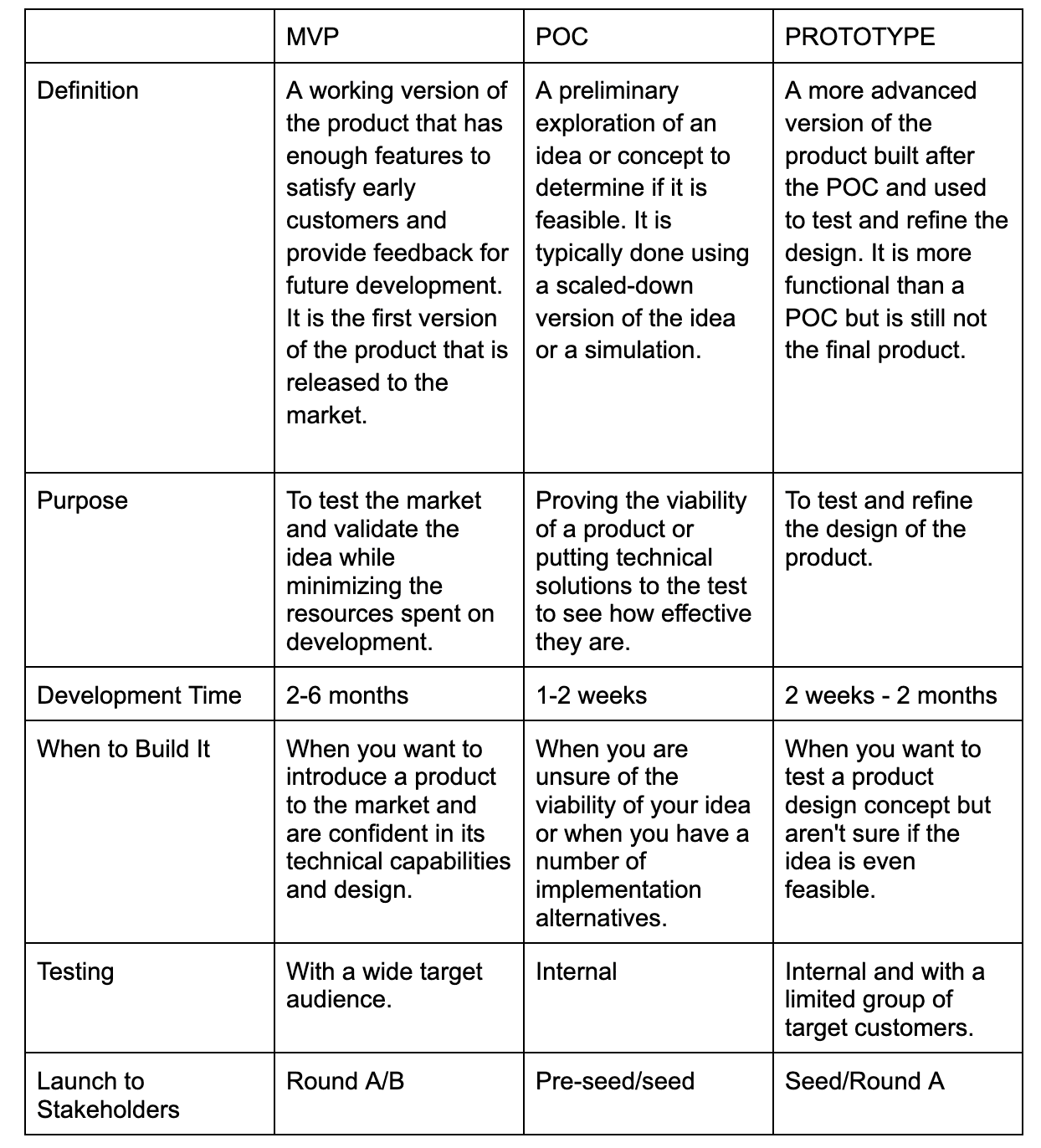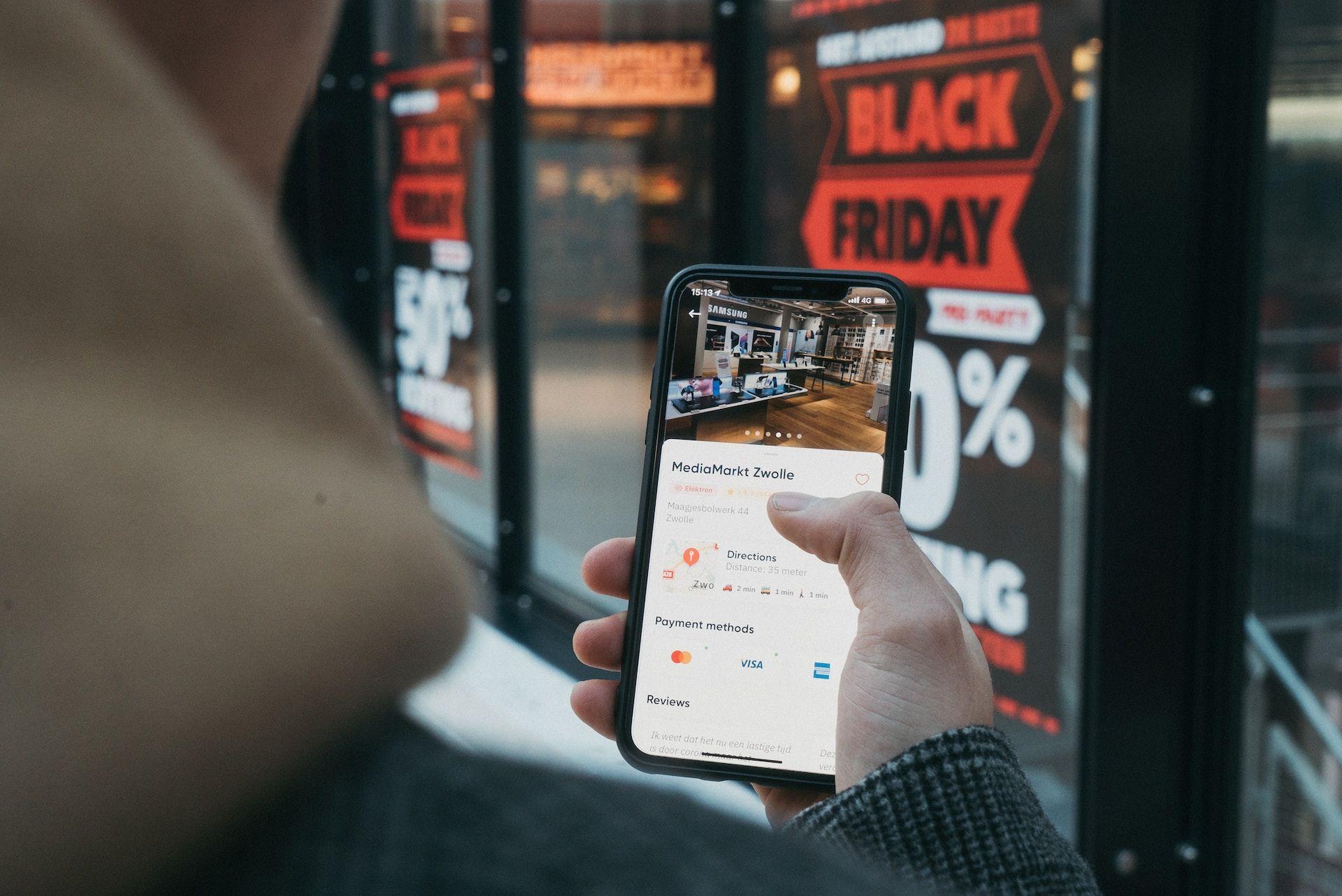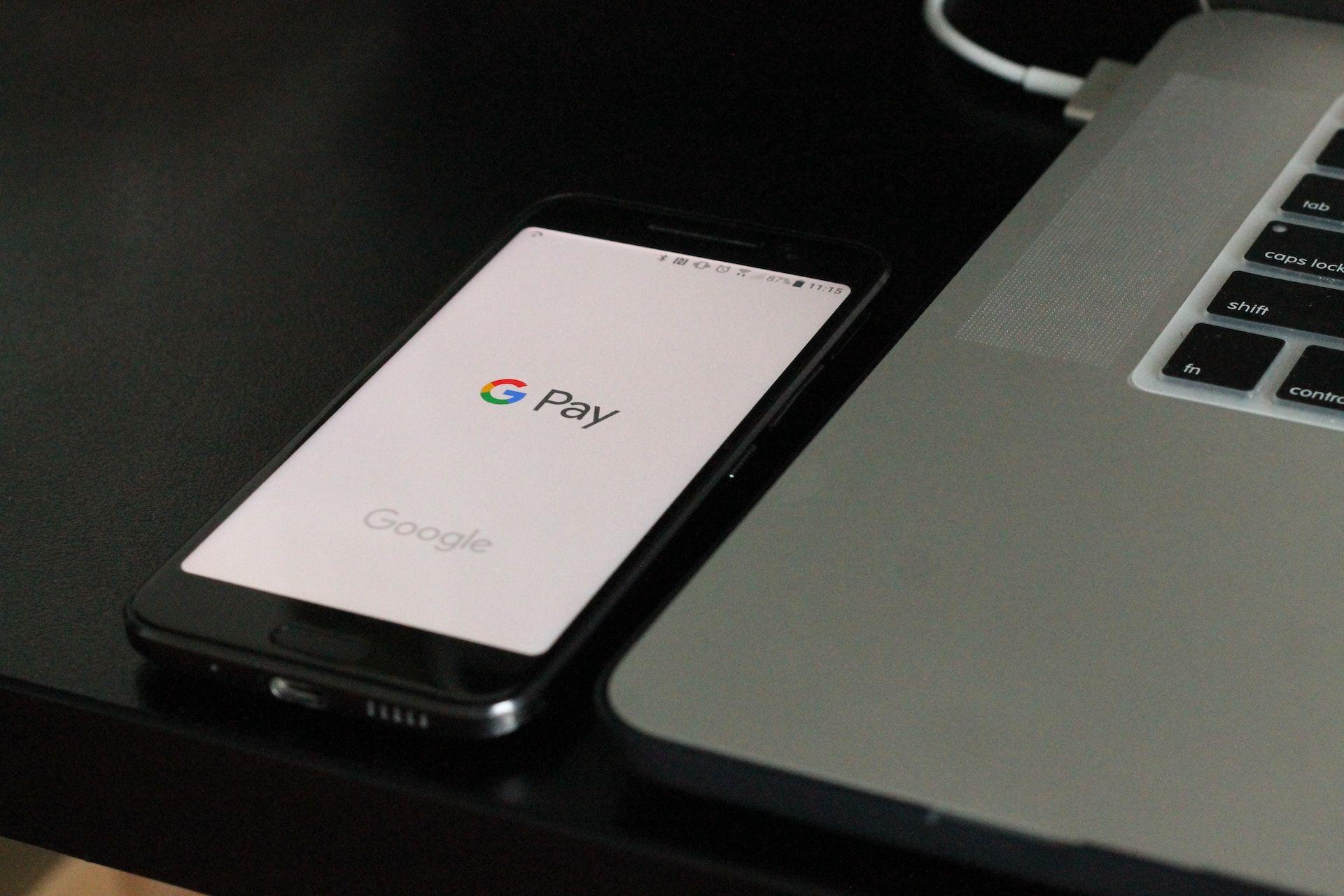Building a product always starts with outlining its idea, purpose, and core features. Altogether, that usually is summarized in an MVP – a scaled-down version of your solution that still retains its core functionality. This article is a comprehensive, step-by-step guide on how to build an MVP in 2023, aimed to equip you with the necessary tools, tips, and strategies for software development and quick time to market.
No matter your industry or level of expertise, this guide will help you navigate the MVP development process with ease and confidence. Let's get started on turning your brilliant concept into a market-ready masterpiece!
Building MVP for Startups: Key Reasons to Do It
An MVP is a stripped-down version of your product that contains just enough features to be functional and valuable to early users. Startups build it because it allows them to test their core business idea without investing significant time or resources. By creating a simplified version of the final product, they can gather feedback from early users and make adjustments accordingly. This iterative process helps identify potential market demand, validate product ideas, and minimize risk before scaling the business. Additionally, by focusing on the essential features, startups can avoid over-engineering an early product and increase speed to market.
Benefits of an MVP for your startup include
- Risk reduction: Building an MVP allows startups to test their product idea in the market before investing heavily in development. This reduces the risk of failure and waste of resources on an unsuccessful product.
- Feedback and validation: MVPs enable startups to gather user feedback early in the process, which helps identity what works, what doesn't, and what needs improvement. This information is crucial in refining the product and validating its viability.
- Faster time-to-market: Instead of trying to build a feature-rich and complex product initially, startups can present MVP, gather feedback, and then, based on what users like most about it, focus on the core functionality that can be introduced to the market sooner.
- Resource optimization: Creating a scaled-down version of a solution ensures that startups focus on delivering essential features with minimum resources. This helps optimize resource allocation and eliminates unnecessary spending on non-core features.
- Improved user engagement: An MVP provides users with a functional and reliable product that focuses on solving their primary problem while omitting unnecessary functionalities or complexities that might disengage them. As a result, user engagement and satisfaction tend to be higher.
- Attracting investors: Demonstrating a successful MVP can help attract potential investors who see value in the startup's idea. They are more likely to invest when there's tangible proof of concept, user traction, or revenue, which an MVP can provide.
- Scalability: Building a stripped-down version of a product makes it easier for startups to scale their products based on evolving market demand and requirements. As new needs arise or new trends emerge, startups can adapt more swiftly by building upon their existing MVP infrastructure instead of starting from scratch.
- Foster teamwork and focus: Developing an MVP instills discipline in how startups approach problem-solving and decision-making among team members, ensuring everyone stays focused on key aspects of the product that drives value for users.
How can we help you achieve your digital goals?
Get in touchPOC vs. Prototype vs. MVP
POC (Proof of Concept), prototype, and MVP are all terms used to describe different stages of a product development process. We’ve created a comparison table to help you understand the major differences between them.

MVP Development for Startups: Major Standards
There is a perception that developing an MVP involves hurriedly creating a raw product. However, at the MVP stage, your product should already be functional, have all major hypotheses verified, and only have the necessary features. It must also be constructed quickly, in no more than three months.
- Minimum Functionality: This includes the essential core features that solve a specific problem or cater to the users' needs. It should not be overloaded with features that are unnecessary for the initial launch.
- Fast Development: The development should be quick, focusing on delivering a functional product to users as soon as possible to gather feedback and learn from their experience.
- User-centric Design: The design and user interface should be simple, clean, and easy to use. Focus on a seamless user experience rather than flashy aesthetics.
- Testable: An MVP should be designed in a way that allows for quick iteration and improvement based on user feedback. It must be created with testing and evaluation in mind to enable continuous refinement.
- Measurable Success: Establish clear success metrics, such as user acquisition, conversion rates, or engagement levels. This helps determine if the product is meeting its objectives and guiding future development decisions.
- Scalability: While it is essential to focus on the immediate needs of the users, it's equally important to build a robust foundation that can support future growth as more features are added and the user base expands.
- Cost-effective Development: Minimize costs by prioritizing essential features, streamlining processes, and utilizing open-source tools or pre-built solutions whenever possible. This helps maintain a lean budget while still delivering a valuable product to users.
- Clear Value Proposition: Ensure that your MVP communicates its value proposition effectively to target users. Focus on solving a specific problem or addressing an unmet need to ensure strong market demand for your offering.
- Easily Adaptable: Prepare for change by being easily adaptable based on user feedback and market trends. Building out modular components or embracing iterative design principles allows for quick evolution and improvement of the product.
ResearchGate defines iterative design phases as follows:

MVP Development: Successful Cases
Many well-known businesses got their start with MVPs. You might be surprised to learn that no payments were made on Airbnb's initial landing page. Customers were forced to deal directly with the host in order to exchange money. It goes without saying that it was a significant issue, but they chose not to incorporate payments during the MVP stage.
Dropbox started with a simple concept of cloud storage for users. It was able to launch a successful MVP that quickly gained traction with millions of users.
Built as a photo-sharing app, Instagram launched as a simple MVP that had basic photo filters and allow users to upload and share pictures with their friends and family. It became a massive hit after introducing a discovery section and network-building features.
Uber also started as a simple MVP for car services in San Francisco, but it eventually revolutionized the transportation business by providing a platform where drivers can offer services to riders at different price points.
How To Build An MVP In 6 Steps
You only need to follow your plan carefully and take the following steps to create a fully-functioning MVP, able to represent your idea to the target audience and see their reaction.
Problem Definition
The first step of MVP creation involves defining a specific problem the product aims to solve. This includes identifying a target audience that encounters the issue and creating a clear outline of how it can be eliminated. It is essential to have an in-depth analysis of the pain points experienced by potential users to design a product that addresses them effectively. This stage helps form the foundation for subsequent steps, such as designing features, building an actual prototype, and validating the concept through user feedback.
Holistic Market Research
Next, startups should undertake holistic market research and outline user flow. In this step, they need to gather comprehensive information about the market, focusing on the target audience, competitors, and industry trends. This helps identify potential opportunities and pitfalls for the future product, ensuring its feasibility and relevance in the current market.
To conduct holistic market research, you should:
- Determine the target audience: Identify the demographics, psychographics, and behavioral characteristics of the users who are likely to benefit from the product.
- Analyze competitors: Study the competitive landscape to identify strengths and weaknesses of existing products, unaddressed gaps in the market, and unique selling points for your MVP.
- Assess industry trends: Keep up with technological advancements, shifts in consumer demand, and any regulatory changes in your industry to ensure that your product aligns with the current landscape.
User Flow Discovery
Once you have gathered sufficient data from the market research process, you then proceed with outlining user flow. User flow refers to defining a sequence of steps users will follow when interacting with your MVP. This process allows you to visualize how users will use and navigate through your product, helping you pinpoint and fix any potential bottlenecks or usability issues early on.
To outline user flow, follow these steps:
- Define user objectives: Enumerate the primary goals users will try to achieve through your product.
- Map out the user journey: Create a step-by-step pathway that demonstrates how users will reach their objectives, starting from their entry point to achieving their goals.
- Consider alternative scenarios: Address potential variations in user behavior by examining different routes users may take when encountering challenges or obstacles.
Note: this step is only efficient if you defined the right target audience beforehand. Outlining potential users and user flow, you set a strong foundation for building a successful MVP that meets genuine market needs and provides an exceptional UX.
Design & Prototyping
Now, you can move on to designing and prototyping. This involves creating wireframes, an MVP prototype, and several versions of logos and mockups. All this is done with the aim of visualizing the product's user experience and layout before investing time and resources into development. Wireframes are basic visual representations of the product's interface, focusing on the arrangement of elements and user flow. They help in identifying any potential usability issues early on.
Creating several versions of logos and mockups helps showcase different visual branding possibilities. These can be shared with stakeholders to gain valuable feedback for finalizing visual elements, ensuring the final design aligns with your target audience's expectations and preferences. Most startups hire UI/UX design services companies to speed up the process.
MVP Development
Once the stakeholders are satisfied with the visual representation of the future product, startups can move on to the development of the MVP itself. This step involves writing high-quality code for the product to work efficiently and effectively. It includes carrying out all necessary integrations with services, such as incorporating APIs, third-party tools, and software to enhance the features and functionality of the MVP. Additionally, startups will have to address all compliance requirements and implement security measures to safeguard user data and protect the product from potential threats.
Note: this step is critical in building a reliable and functional MVP that can be tested by users and stakeholders to validate its potential in the market.
Feedback Collecting & Testing
The final step of MVP creation involves collecting responses and testing the changes: feedback and data are gathered from the target audience or users who have interacted with the minimum viable product. This data is crucial for understanding the efficacy of the product, pinpointing areas for improvement, and validating the value proposition. Once the responses are collected, they are analyzed to determine patterns, trends, and insights that can guide data-driven decisions for refining the MVP.
Startups then alter their MVPs, make changes, and test them based on user feedback. All this is done with one goal - to ensure that product development aligns with user needs and market demand. Iterative testing is carried out to continuously improve the product until it reaches an optimal balance between meeting customer requirements and minimizing development costs.
How can we help you achieve your digital goals?
Get in touchHow to Aggregate Quality Traffic Post Launch
However much time you spend on creating an MVP, it won't provide results if not viewed and used by customers. Furnishing it with fantastic features is all very well and good, but without users actively using it, you won't be able to make the best choices for the next phase of the process.
To get qualified traffic for your MVP, follow these steps:
- Create valuable content: Develop blog posts, articles, or videos that provide value to your target audience. This content should address their pain points and showcase how your MVP can solve their problems.
- Optimize your website for SEO: Implement on-page and off-page SEO techniques to improve your website's visibility in search engine results so that more qualified visitors can find you online.
- Use social media: Post regular content on popular social media platforms where your target audience is active. Engage with them by responding to comments and answering questions, which will help build trust and credibility.
- Leverage email marketing: Build an email list of potential customers by offering incentives like free ebooks or discounts to early users. Use this list to send regular updates on the MVP, share valuable content, and promote special offers.
- Run targeted ads: Invest in paid advertising campaigns on platforms such as Google Ads or Facebook Ads ( or, better, on both) targeting specific demographics or interests related to your MVP.
- Partner with niche experts: Collaborate with experts in your niche to promote your MVP through their channels, which will give you access to a larger audience that trusts their opinion.
- Attend networking events or trade shows: Presenting at conferences or attending networking events is an excellent way to get exposure among a relevant audience.
- Utilize referral programs: Encourage existing users to share information about the MVP with their connections by offering referral incentives such as discounts or exclusive features.
- Track and analyze data: Monitor the effectiveness of each channel used for driving traffic, making any necessary adjustments along the way based on performance metrics.
What to Do Next?
MVP development for startups doesn’t end once it goes public. After the MVP launch, your next steps should include:
- Prioritizing improvements: Based on the feedback and data analysis, prioritize the most important features and improvements to be implemented in future iterations.
- Iterative development: Continuously iterate on the product by incorporating changes and releasing updated versions. This process involves re-evaluating priorities, revising timelines, and adjusting resources as needed.
- Expanding product features & functionalities: As you gather more data about customer preferences and requirements, start developing additional features that align with those needs.
- Scaling up operations: As the user base grows, scale up team size, infrastructure, and other resources to maintain a seamless experience for users.
- Financial planning and monetization strategy: Analyze revenue streams and financial projections to create a sustainable business model; consider any necessary adjustments to pricing or service offerings.
- Partnerships & integrations: Explore opportunities for partnerships with other companies or platforms that could enhance your product's value proposition or expand its reach.
- Continuous improvement & refining vision: Keep refining your product offering based on customer feedback, market demands, and evolving trends; always strive to make your product better and maintain a strong brand identity in the market.
Final Word
If you want your business concept to become the next Facebook, the best course of action is to keep experimenting with your ideas until you find one that works. When it comes to testing your concept as rapidly as possible, creating an MVP is the best path you can choose.
Need help developing an MVP? We provide MVP development services for startups who wish to develop and launch their products quickly without sacrificing value and quality. Clover Dynamics is a software development company specializing in mobile apps and custom software development. Our team consists of experts always eager to learn, which keeps us on track with market trends and helps us build on our expertise.
Let’s talk about your idea! Click here to contact us and see what we can do for you.







